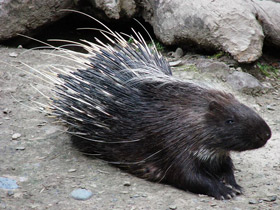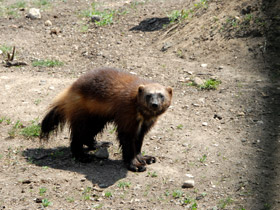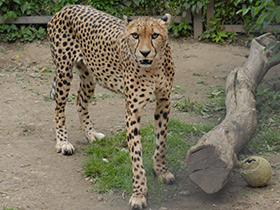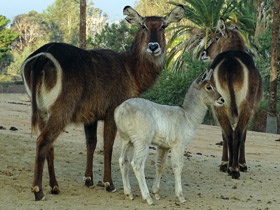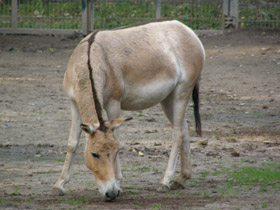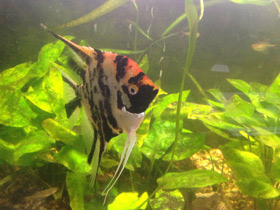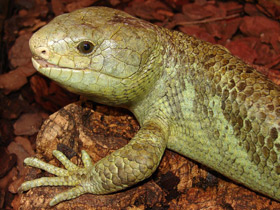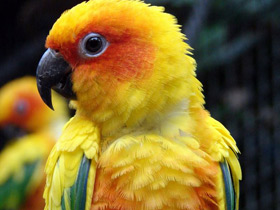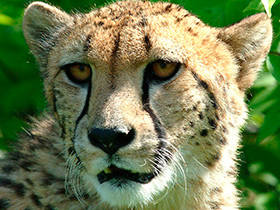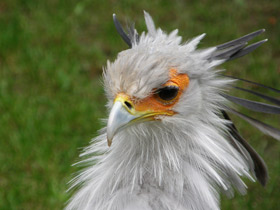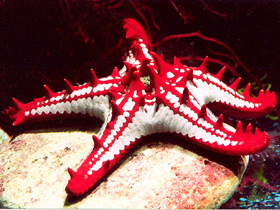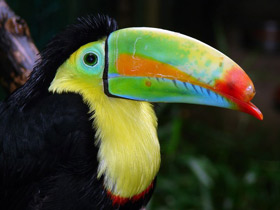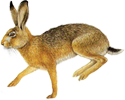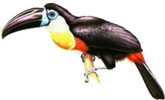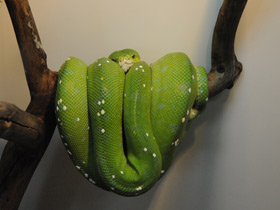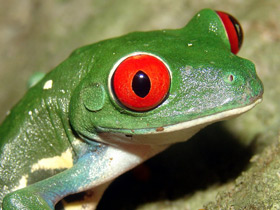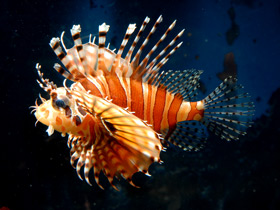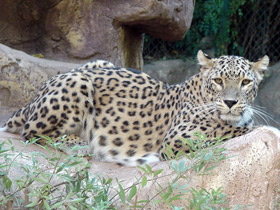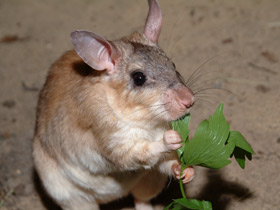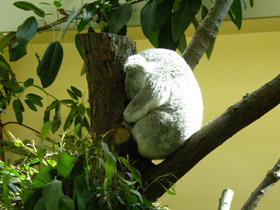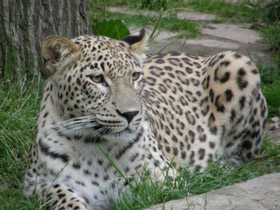Malayan porcupine or Himalayan porcupine (Hystrix brachyura)
The Malayan porcupine or Himalayan porcupine (Hystrix brachyura) is a species of rodent in the family Hystricidae. Three subspecies are extant in South and Southeast Asia.
Habitat
Hystrix brachyura is distributed in the forests of mainland Southeast Asia, Sumatra and Borneo. It can be found in Nepal, India, central and southern China, Myanmar, Thailand, Laos, Vietnam, Peninsular Malaysia and Brunei. Hystrix brachyura inhabits forests of various types, open areas near forests, enters agricultural lands and climbs mountains up to 1500 metres. This animal digs burrows with several exits in the ground and lives in small groups. It leads a predominantly nocturnal lifestyle.
Distinctive features
This large and thick rodent is covered with sharp, stiff needles. The needles are black and white or yellow, with wool between them. Hystrix brachyura have short legs covered with brown hairs, with four claws on the front legs and five on the hind legs. The body length of Hystrix brachyura ranges from 63 to 73 cm, its tail is 6 to 11 cm long, and its weight ranges from 700 to 2,400 grams. Porcupines are vegetarians, they dig up tubers, root crops, eat fruit that has fallen to the ground, and gnaw bark. However, if they find insect larvae or carrion, they will eat them too. In search of food they go out at night, and during the day they return to burrows, which they dig themselves and live in them for many years. The gestation period of Hystrix brachyura is about 110 days. Females usually give birth to 1 to 3 cubs in burrows. The cubs are born with soft needles that harden after a few days. The maximum lifespan of Hystrix brachyura is about 27 years.
How Hystrix brachyura defends itself
The needles of Hystrix brachyura are an excellent defence against predators. Sluggish in appearance, the porcupine is able to make a sharp backward dash and plunge its needles into an attacker. Sharp needles do not sit firmly in the skin of the host and easily remain in the muzzle or in the paws of predators. However, the porcupine prefers to warn the enemy first by shaking the needles, which make a cracking or scraping sound.
Unfortunately, the needles do not save this rodent from arrows, windpipes, trap loops and firearms. Local people hunt Hystrix brachyura for the tasty meat and use the needles as jewellery.
Diet
They normally feed on roots, tubers, bark and fallen fruits. They also eat carrion, insects, and large tropical seeds such as belonging to Chisocheton cumingianus.
Behaviour
Hystrix brachyura forages at night and rests during the day. It may be found singly or in pairs. It can also swim and gnaw. The sow usually delivers a single pup at a time, but delivering two pups has also been recorded. The gestation period is about 90 to 112 days. Their maximum longevity is about 27 years.
Conservation and economic importance
IUCN has categorized this species as Least Concern. The quills of the Malayan porcupine are used for ornamental purposes. Porcupines are also hunted for meat and traditional medicines.
Subspecies
- Hystrix brachyura brachyura;
- Hystrix brachyura subcristata;
- Hystrix brachyura hodgsoni;
- Hystrix brachyura punungensis (extinct);
- Hystrix brachyura yunnanensis Anderson, 1878;
- Hystrix brachyura bengalensis Blyth, 1851.









